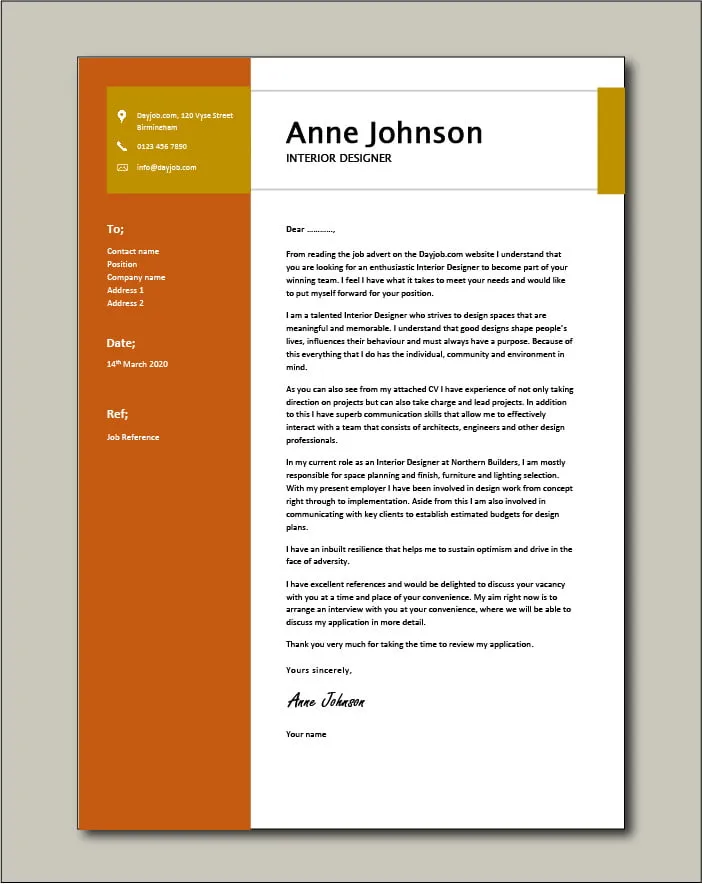What is an Interior Design Cover Letter
An interior design cover letter is a crucial document accompanying your resume when applying for design positions. It serves as your first point of contact with potential employers, allowing you to introduce yourself and highlight your qualifications beyond what’s listed in your resume. Think of it as your personal sales pitch, where you articulate your passion for design, showcase relevant skills, and express your interest in the specific role and company. A well-crafted cover letter can significantly increase your chances of landing an interview by grabbing the hiring manager’s attention and demonstrating your unique value proposition. It’s an opportunity to create a positive first impression and set yourself apart from other applicants.
Why a Cover Letter Matters for Interior Designers
In the competitive field of interior design, a cover letter is not just a formality, it’s a necessity. While your portfolio showcases your creative abilities, the cover letter provides the context and narrative around your work. It allows you to explain your design philosophy, articulate your understanding of the client’s needs, and demonstrate how your skills align with the job requirements. Furthermore, a cover letter provides insights into your personality, communication style, and enthusiasm for the role. It’s where you can showcase your soft skills, such as problem-solving, teamwork, and communication. Without a cover letter, your application might lack the personalized touch needed to capture an employer’s interest, potentially missing out on opportunities to showcase your abilities and secure an interview. It can be the difference between a rejection and a career-changing opportunity.
Showcasing Your Design Skills
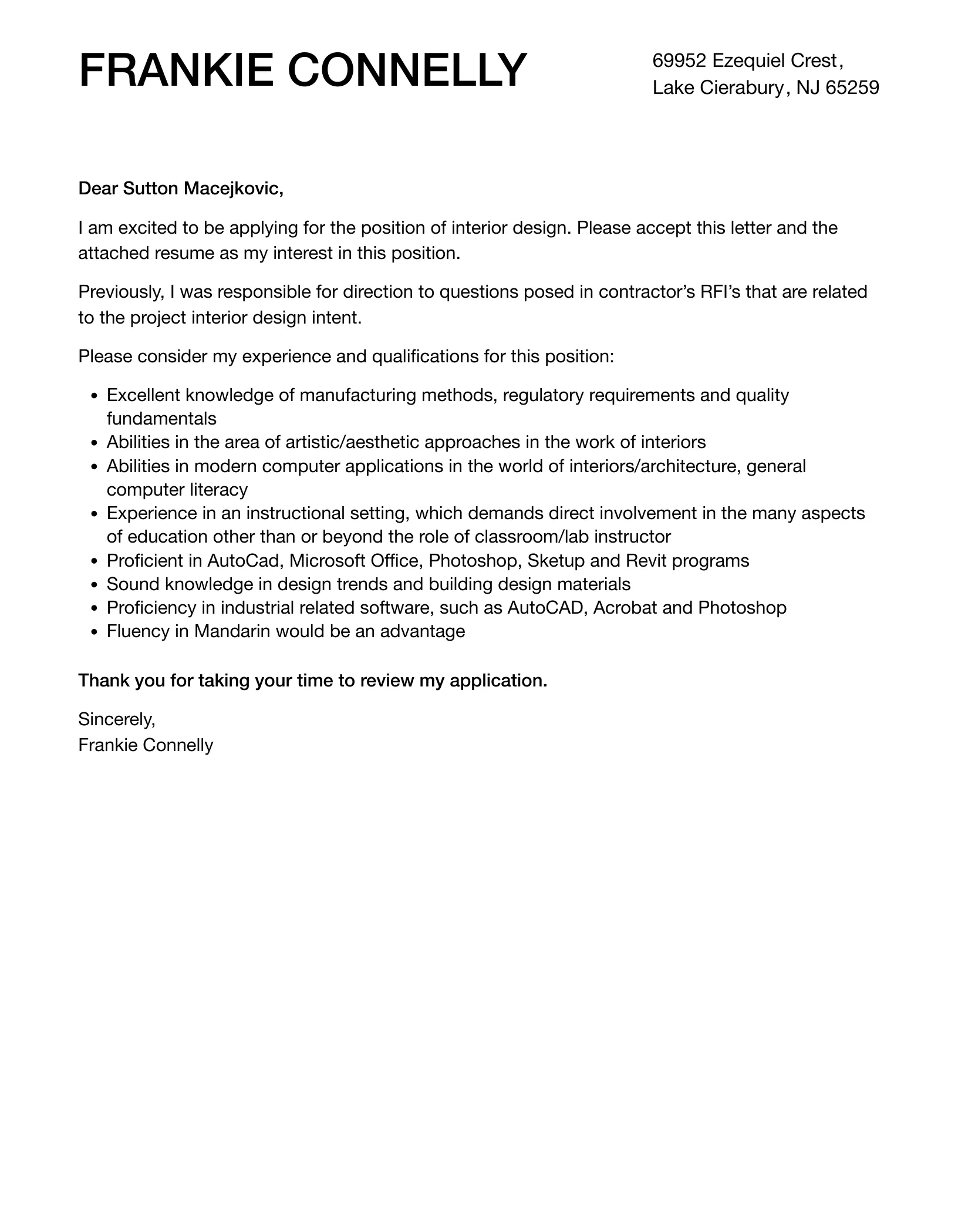
When highlighting your design skills in your cover letter, be specific and relevant to the job description. Don’t just list your skills, demonstrate them through examples. Mention specific software proficiencies, such as AutoCAD, Revit, SketchUp, or 3ds Max, and elaborate on how you’ve used them to create stunning designs. If the job requires specific design styles, such as modern or minimalist, tailor your examples to showcase your experience in those areas. For example, you could describe how you successfully integrated sustainable design principles into a recent project, or how you effectively managed a budget while delivering a high-end design. By providing concrete examples, you provide the employer with a clear picture of your abilities.
Highlighting Your Portfolio
Your portfolio is a visual representation of your skills, and your cover letter should direct the hiring manager’s attention to specific projects within it. Instead of simply stating that you have a portfolio, mention the key projects that align with the job requirements. Describe the scope of each project, your role, and the successful outcomes. For example, you could highlight a residential design project where you expertly managed client expectations, or a commercial project where you optimized space for functionality and aesthetics. When referencing your portfolio, use specific project names or numbers so the hiring manager can easily find the relevant examples. This helps them understand the breadth and depth of your experience.
Quantifying Your Achievements
One of the most effective ways to make your cover letter stand out is to quantify your achievements. Instead of vague statements like “improved efficiency,” provide measurable results. For example, instead of just saying you “managed projects,” state that you “successfully managed 10+ projects simultaneously, delivering them on time and within budget.” If you increased client satisfaction, mention the percentage increase. If you contributed to cost savings, specify the amount. By providing quantifiable data, you give the employer concrete evidence of your skills and capabilities. It shows that you not only have the skills but also the ability to achieve tangible results. Use numbers and metrics to demonstrate the impact of your work.
Key Components of a Successful Cover Letter
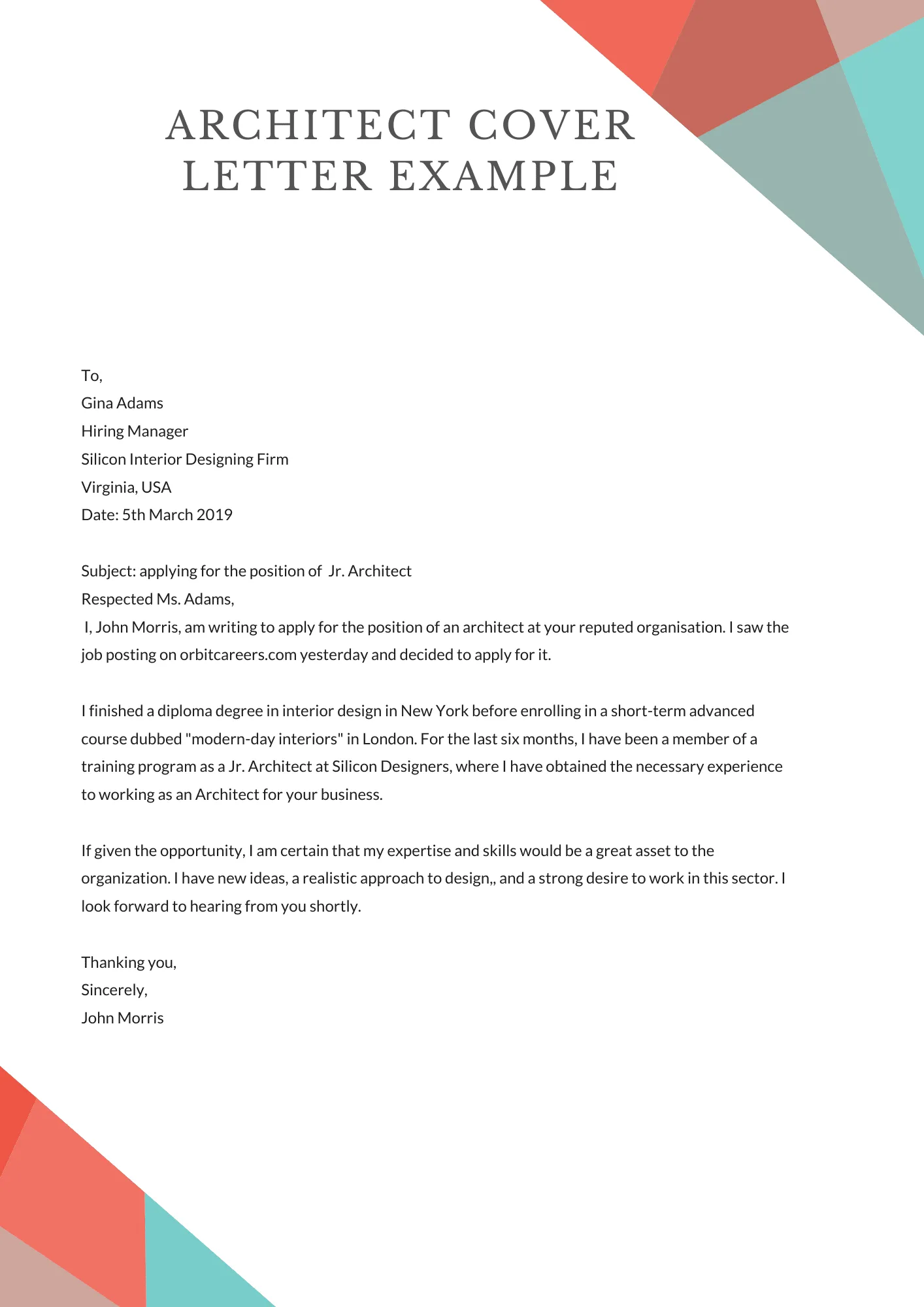
Contact Information and Date
At the top of your cover letter, include your contact information, such as your name, phone number, email address, and LinkedIn profile URL. This makes it easy for the hiring manager to contact you. Also, include the date. Ensure that the date is current. This shows that you are actively seeking opportunities and prepared to start a new role. Accuracy in this section immediately establishes professionalism and attention to detail.
Recipient’s Information
Address your cover letter to a specific person whenever possible. Research the hiring manager’s name and title and address the letter directly to them. If you can’t find a specific name, use a professional greeting like “Dear Hiring Manager.” Avoid generic greetings such as “To Whom It May Concern,” which make your application seem less personalized. Addressing the letter to a specific person demonstrates your interest and initiative.
Opening Paragraph Hook
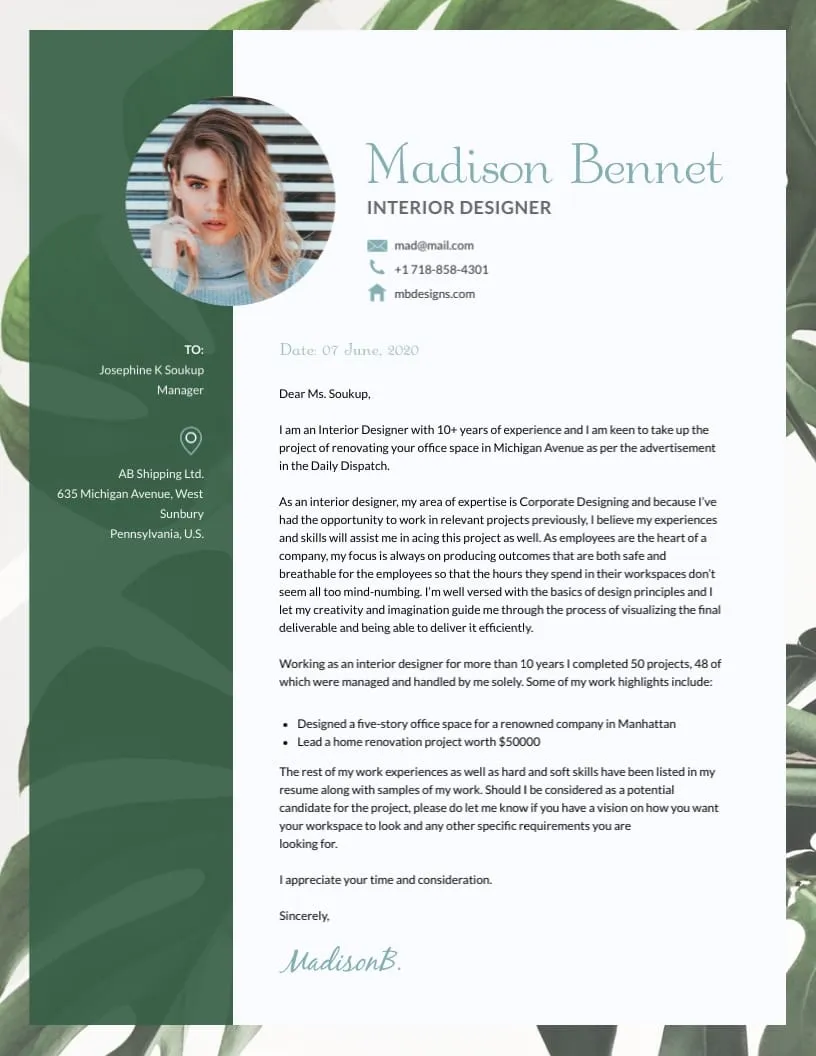
The opening paragraph is your opportunity to grab the reader’s attention. Start with a strong hook that highlights your enthusiasm for the position and the company. You could mention something specific that attracted you to the role, or briefly summarize your most relevant qualifications. Avoid generic introductions. Instead, tailor your opening to the specific job and company. For example, you could mention a recent project of theirs that impressed you, or express your excitement about contributing to their team’s success.
Body Paragraphs Design and Skills
The body paragraphs are where you showcase your design skills, experience, and accomplishments. Use clear and concise language, and focus on the requirements of the job. Provide specific examples from your portfolio, and quantify your achievements whenever possible. For each skill or achievement, explain how it benefited your previous employers or clients. Customize the content to the specific job description, emphasizing the skills and experiences that align with their needs. Use action verbs and varied sentence structures to maintain the reader’s interest and make your cover letter dynamic. Focus on the value you bring to the company.
Closing Paragraph
In your closing paragraph, reiterate your interest in the position and the company. Thank the hiring manager for their time and consideration. Clearly state your availability for an interview and provide your contact information. Show confidence in your abilities and express your enthusiasm to discuss your qualifications further. Avoid ending with a generic phrase; instead, add a call to action such as “I am eager to discuss how my skills and experience can contribute to your team’s success.”
Formatting and Style
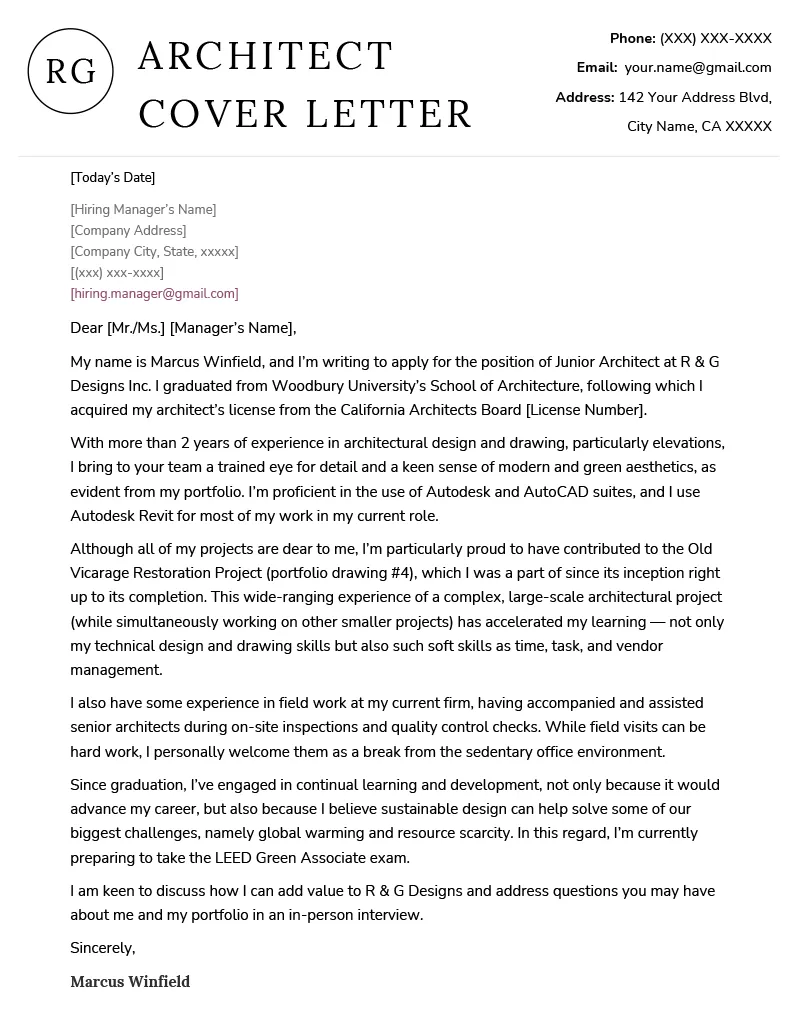
Font and Readability
Choose a professional and easy-to-read font, such as Times New Roman, Arial, or Calibri. Use a font size between 10 and 12 points. Ensure that your cover letter has clear formatting with adequate spacing between paragraphs. Use bullet points for lists to make the information easy to digest. Avoid using complex fonts or excessive formatting. The goal is to make your cover letter visually appealing and easy for the hiring manager to read.
Tone and Professionalism
Maintain a professional and enthusiastic tone throughout your cover letter. Use formal language and avoid slang or jargon. Proofread your cover letter carefully to ensure that it is free of errors. Your cover letter should showcase your communication skills and demonstrate your understanding of the company’s values and goals. Write in a way that reflects your personality and passion for interior design, but always maintain a professional demeanor.
Proofreading
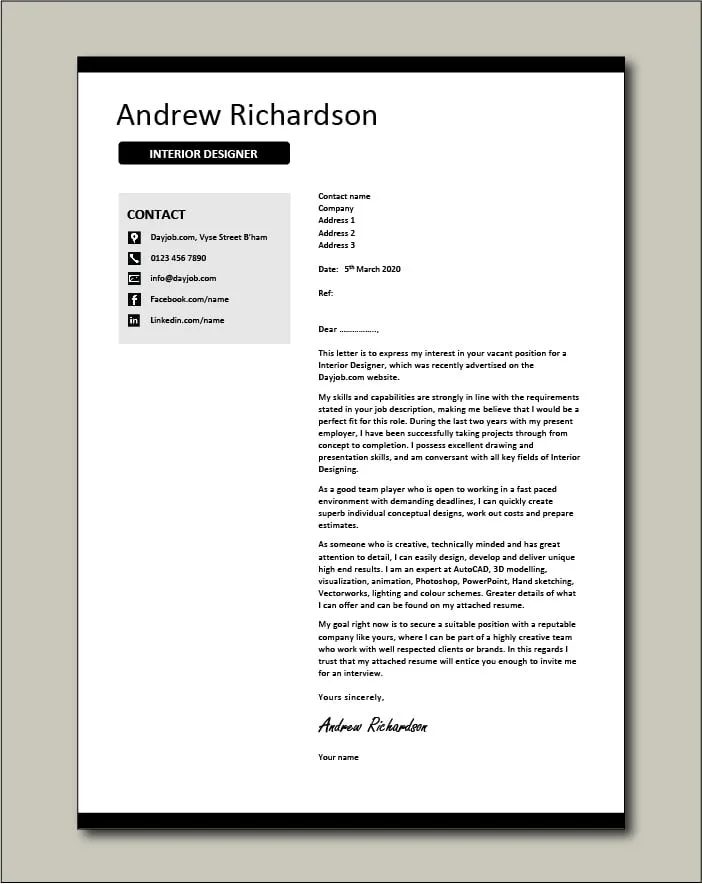
Proofreading is one of the most critical steps in the cover letter writing process. Before submitting your cover letter, carefully proofread it for any grammatical errors, spelling mistakes, or typos. Read the cover letter out loud to catch any awkward phrasing or sentence structures. Ask a friend or colleague to review your cover letter for any errors you might have missed. A cover letter with errors can damage your credibility. Always ensure that your cover letter is polished and error-free.
Common Mistakes to Avoid
Generic Letters
One of the most significant mistakes is sending out a generic cover letter that is not tailored to the specific job and company. Avoid using a generic template and sending it to multiple employers. Instead, customize each cover letter to highlight the skills and experiences that are most relevant to the job description. Show that you understand the company’s values and goals, and that you have a genuine interest in the position. Generic cover letters make you appear less interested and show a lack of effort. Always personalize your cover letter to increase your chances of success.
Typos and Grammatical Errors

Typos and grammatical errors can instantly undermine your credibility. Proofread your cover letter meticulously before submitting it. Errors make you appear unprofessional and demonstrate a lack of attention to detail. Use spell-check and grammar-check tools, and ask someone else to review your cover letter. A well-written and error-free cover letter shows that you care about your application and are serious about the position.
Focusing on Yourself
While it’s important to highlight your skills and achievements, avoid making your cover letter all about yourself. Instead, focus on how your skills and experience can benefit the employer. Explain how you can solve their problems, contribute to their goals, and make a positive impact. Show them the value you bring, and emphasize your ability to contribute to their team’s success.
Cover Letter Samples and Templates
Where to Find Examples
Numerous online resources provide cover letter samples and templates for interior designers. Websites such as Indeed, LinkedIn, and design job boards offer examples that you can adapt. You can also search for examples on design blogs and industry websites. When using a sample, tailor it to your specific skills and experiences, and customize it to the job you are applying for. Look at various samples to understand the different ways you can present your skills and experience.
Customizing Templates
While templates can be helpful, it’s crucial to customize them to match your individual qualifications and the specific job requirements. Don’t simply fill in the blanks. Adapt the template to reflect your unique personality and design philosophy. Use the template as a starting point, and then personalize it with your achievements, skills, and experiences. Add your unique touch to make your cover letter stand out from others.
